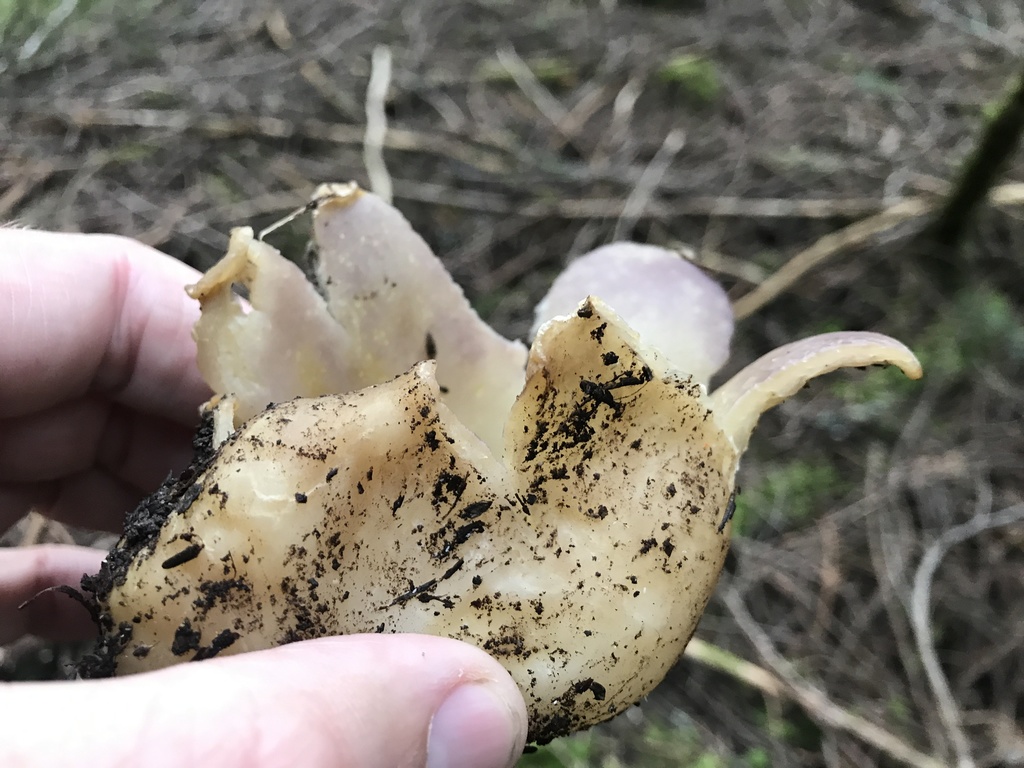Sarcosphaera coronaria, the Pink Crown, is a unique mushroom in a genus all by itself; it has no close relatives. It first appears as a half-buried slightly squishy, hollow white ball. As it matures, the top of the ball splits at the center into 6-12 points, which then open like a flower until the mushroom overall resembles a crown, with a circle of points rising up from a flattened cup. The inside of the crown, where spores are produces, is a dramatic purple colour.
 observation by corvi
observation by corvi
This species is at the center of a historical mystery. Until the 20th century, it was widely eaten across Europe, and many old books recommend it for the table. However, in the 1920s, several people in the Swiss village of Courtételle, where Pink Crowns fried with onions, peppers, and garlic had been a springtime treat for centuries, were poisoned by it.
 observation by scruffasus
observation by scruffasus
Multiple families were sickened multiple times that year, and one woman died. The high profile incident was thoroughly investigated and described in newspapers, and people pretty much stopped eating the suddenly poisonous mushroom. There were a few more poisonings in the 1960s, but thankfully nobody died.
 observation by corvi
observation by corvi
We're still not sure, a century later, what happened at Courtételle. Scientists have analyzed Pink Crowns looking for for all the usual mushrooms poisons: amatoxins, hydrazine, muscamol, muscarine, orellanine, but haven't detected any. The species does often contain unhealthy amounts of arsenic, but not in quantities high enough to explain the events at Courtételle - someone would have to eat 4 kilograms of mushrooms at a sitting to die of arsenic poisoning. An expedition in the 70s couldn't even find any Pink Crowns in the area where they'd been documented in 1920, so Sarcosphaera coronaria will keep its mysteries a little longer.
 observation by vail
observation by vail
This spring, enjoy the sight of the mysterious Pink Crown on our island, but don't eat it!


 observation by corvi
observation by corvi observation by scruffasus
observation by scruffasus observation by corvi
observation by corvi observation by vail
observation by vail observation by corvi
observation by corvi observation by corvi
observation by corvi

